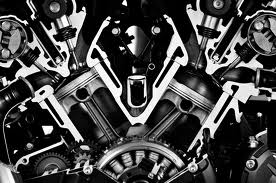Mechanical Failure
The last thing I’m going to cover for no-start conditions are mechanical failures. This covers a lot of possible issues, and I’ll touch on the main ones.
An engine needs to breathe, just like you and me. If it can’t breathe, it can’t run, just like you and me. An engine is basically an air compressor. It needs to draw in air, compress it, burn the mixture inside it, and expel the waste and spent gas. If there is a breakdown with the moving parts of the engine, it cannot perform these critical functions. This includes issues with mechanical timing, broken parts, or a loss of compression.
Let’s cover mechanical timing first. Most engines have a top end and a bottom end. The top end has the valves that open and close, allowing air to come in and exhaust to be expelled. The bottom end has the pistons that move up and down, helping to draw in new air, compress the mixture, and expel exhaust gasses. The bottom and top ends of the engine are tied together so that they work in perfect time. This is called mechanical timing. Mechanical timing is critical; it’s also exact. Most engines use a belt or a chain to connect the top and bottom of the engine. Some use a set of gears, but you don’t see that often.
Video Title: Mechanical Failure- No-Start Problems – EricTheCarGuy Video Description: In this topic, Mechanical Failure, Eric looks at what can be the cause of No-Start Mechanical Failure Issues with your vehicle.Thumbnail: http://www.ericthecarguy.com/images/faq_buttons/Large_FAQ_Images/no-start-icon-large.png
 Our Address
Our Address



